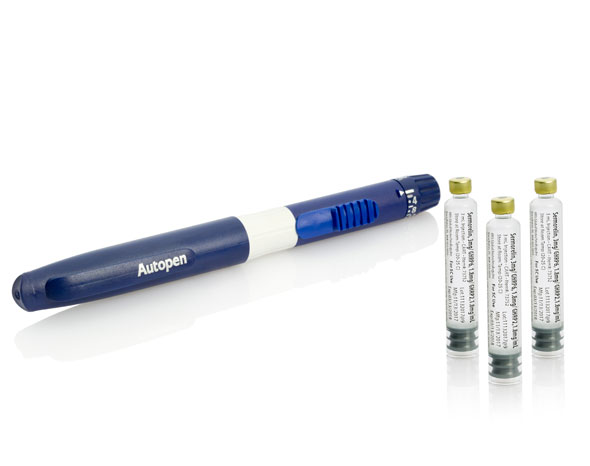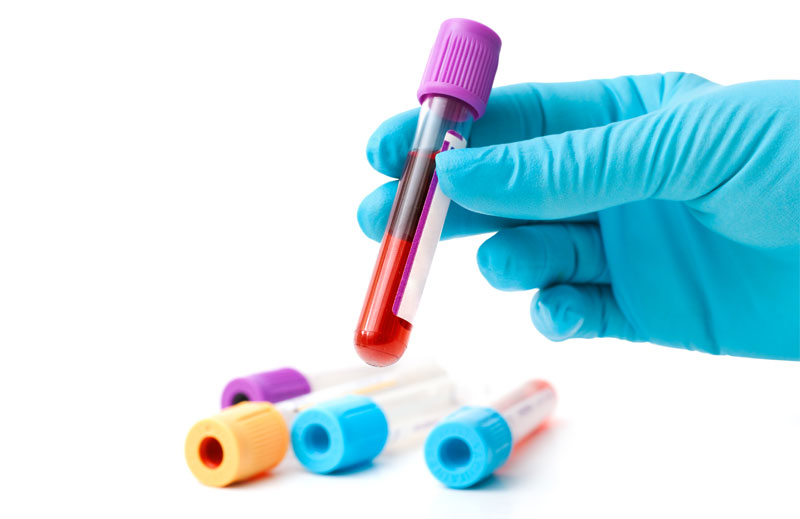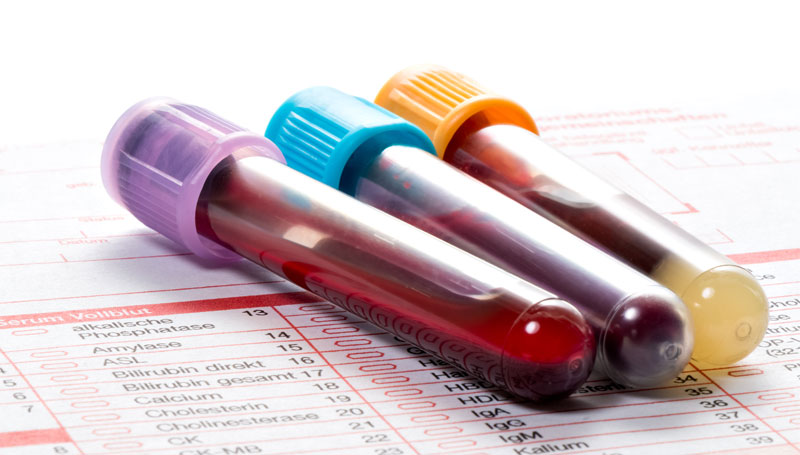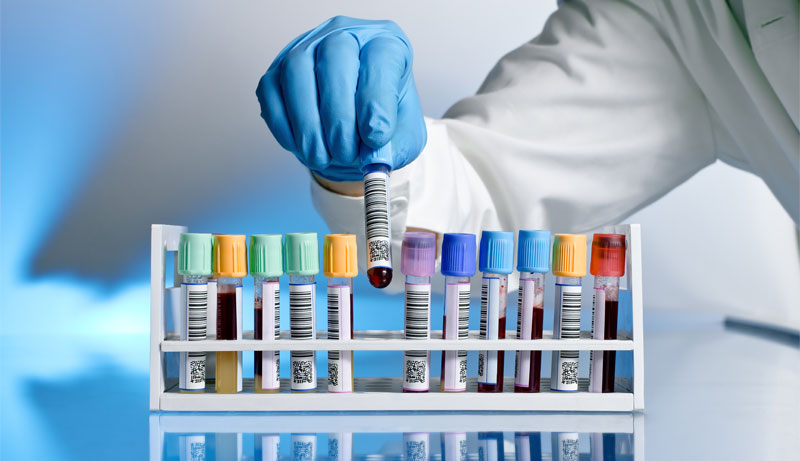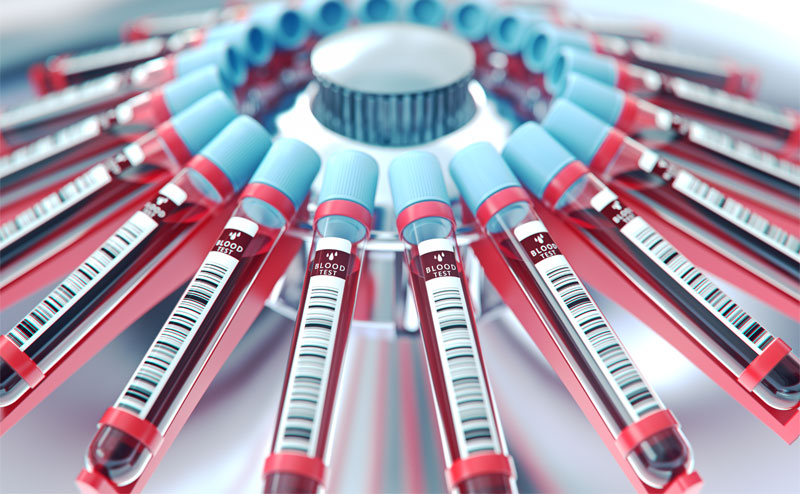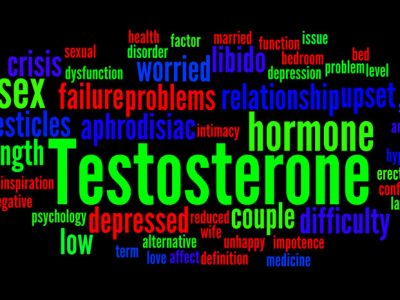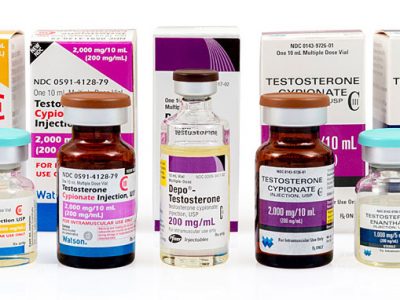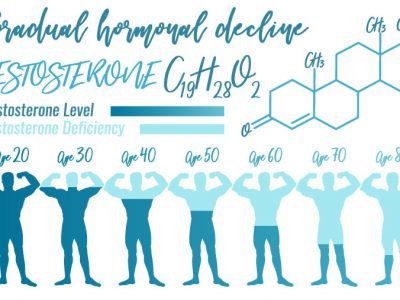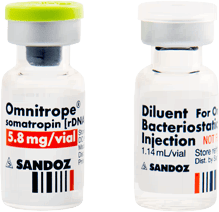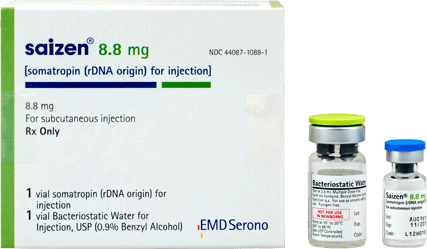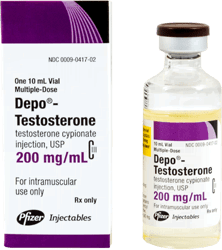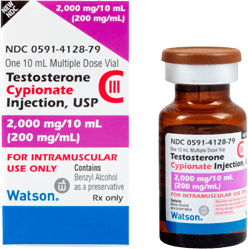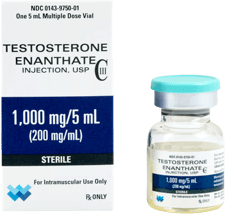- Home
- Growth Hormone
- Growth Hormone
- Growth Hormone Deficiency
- Growth Hormone Therapy
- Growth Hormone Injections
get startedThe Most Effective Hormone Replacement TherapiesA Blood Test is the Only Way to Properly Diagnose Low Testosterone
- The only way to properly diagnose low testosterone, also known as “Low-T,” is with a complete physical examination and a blood test.
- A testosterone blood test is a simple procedure. Just as in any blood test. Your doctor will take a vial of blood, to send to the lab for analysis.
- Blood testing is the most accurate way to obtain a diagnosis of low testosterone. If you have low testosterone, testosterone therapy can help.
A low testosterone blood test is necessary in order to properly diagnose you with low testosterone, also known as “Low-T.”
Testosterone levels will begin to decline after age 30 by 1-2% per year
Anyone over the age of 35, man or woman, can be suffering from the many debilitating symptoms of low testosterone. Signs you may have Low-T include:
- Increased fatigue, lack of energy
- Loss of lean muscle
- Increased fat, particularly adipose fat (belly fat)
- Sleep apnea, or other conditions of disturbed sleep
- Loss of bone density
- Loss of beard
- Loss of body hair
- Loss of libido
- Erectile dysfunction
However the only way to make sure that your symptoms are indeed due to Low-T, and not some other disease or condition, is to have a low testosterone blood test.
The only way to confirm a diagnosis of low testosterone is with a blood test.
Your Low Testosterone Blood Test
While some doctors or testosterone clinics will use a swab salvia test, the most accurate way to determine if you have low testosterone is with a blood test. Blood testing for low testosterone is used not only to diagnose age-related testosterone loss, but any abnormality of testosterone level. Other reasons why your doctor could prescribe a testosterone blood test could be:
- To determine why you may be having erectile difficulties
- To test your fertility, if you have been trying unsuccessfully to get your partner pregnant
In children, a testosterone blood test could be ordered to see why they may not be reaching puberty, or developing secondary sex characteristics, or presenting with ambiguous sex organs. In women, a testosterone blood test could be used to pinpoint infertility issues, or to test for a condition known as polycystic ovary syndrome (PCOS).
In any case, no matter the reason why your doctor has ordered a testosterone blood test, a small sample of blood will be drawn from a vein in your arm, and then sent to the proper lab for testing.
Your testosterone blood test is designed to measure the testosterone level in your blood. There is no special preparation needed for your testosterone blood test.
Preparing for a Low Testosterone Blood Test
There is no special preparation needed for your testosterone blood test. Doctors usually do prefer to draw you blood sample in the morning. While testosterone is understood to be the “male” hormone, it exists in the blood stream of men and women. Testosterone blood tests are used to diagnose low testosterone related conditions in men, women, boys, and girls.
Your testosterone blood test is designed to measure the testosterone level in your blood. Testosterone exists in your blood in two ways: as testosterone bound to proteins, such as albumin and sex-hormone binding globulin [SHBG], and as unbound, or “free testosterone.”
Most of the testosterone in your blood, over 95% circulates as bound testosterone, a much smaller amount exists as free testosterone. However, both are what we call “bioavailable,” and can interact with target tissues, and stimulate testosterone reliant processes. A typical testosterone blood test, tests for both, or the total volume of testosterone in the blood. If something should come back in the results of your total testosterone blood test that causes doctors to suspect some specific condition, an additional test, to detect only your level of free testosterone, may be ordered. However, for most conditions, and specifically for age-related low testosterone, the total testosterone blood test, is all that will be required.
Understanding Your Low Testosterone Blood Test Results
What is considered a “normal” testosterone level changes throughout your life. What is normal also varies from patient to patient. Depending on your age, and why the doctor ordered you testosterone blood test, if the results are found to be below normal for you, the doctor will then attempt to diagnose the cause of your declining testosterone.
In men under 30, low testosterone could indicate:
- A disease or condition impacting the hypothalamus or pituitary gland
- Certain genetic conditions that are known to cause decreased testosterone output such as Klinefelter’s disease, or Prader-Willi syndrome
- A disease, injury or condition that impacts the testes
- Chronic hormonal diseases such as diabetes
However, if you are over 30, and you have been tested for low testosterone, and your testosterone blood tests indicate your levels are below normal, the cause is almost always due to age related testosterone decline.
In women under 30, a blood test that indicates low testosterone could mean:
- PCOS (polycystic ovary syndrome)
- Cancer of the ovaries or the adrenal gland
- A condition known as congenital adrenal hyperplasia, a genetic disorder that impacts the adrenal glands
Again, in woman over 30, and particularly over 40, who come back with a testosterone blood test indicative of Low-T, chances are it is not one of the above conditions, but a result of age-related testosterone decline.
Do I Need Testosterone Therapy?
If your blood test indicates that you do have low testosterone, particularly if you are a man or woman over 35, your doctor may prescribe testosterone replacement therapy.
Testosterone replacement therapy is only available with a doctor’s prescription. Testosterone replacement therapy can be given in patches, as gels, or in sub-dermal slow-release pellets, but it is most commonly prescribed in the form of injections. You will be taught how to self-administer the injections, which are given into the muscles, usually of your arm, thigh, or buttocks.
In men and women between the ages of 35 and 65, testosterone replacement therapy has produced life changing results. Testosterone therapy has been shown to slow, and in some cases, even reverse the symptoms of age-related hormone decline.
Here are 10 ways that testosterone therapy can improve your quality of life:
- Help you get in shape, and stay in shape – BMI, or body mass index is basically a measure of your muscle to fat ratio. Men and women with low testosterone will almost always have a BMI index that indicates being overweight, and in many cases in the obese range. By boosting metabolism and increasing your body’s ability to build muscle instead of store fat, testosterone therapy can help you to get back in shape, and also stay in shape.
- Improve bone health – Loss of testosterone as you get older is a major contributor to bone loss and osteoporosis in both men and women. However, low testosterone seems to impact bone health of woman more than it does men. Testosterone therapy, particularly in women, can help prevent the osteoporosis that typically afflicts post-menopausal women.
- Increased Energy – Declining levels of testosterone lead to a decrease in strength, energy and stamina, in both men and women. Testosterone therapy has been shown to improve the vitality of men and women with blood test results that have indicated Low-T.
- Menopausal symptoms (Women only) – Testosterone replacement, particularly when used in conjunction with estrogen therapy, or HRT, has been shown to help reduce or eliminate the most devastation symptoms of menopause, such as mood swings, night sweats, and hot flushes.
- Erectile Dysfunction – (Men only) – Low testosterone is a known contributor to erectile dysfunction (ED) in men. Testosterone therapy not only can help you to achieve more sustainable erections, it can help with other sexual wellness issues such as low sperm count.
- Improved Libido – Testosterone therapy has been shown to renew interest in sex, or increase libido, in both males and females suffering from age-related testosterone loss.
- Focus and Cognition – Testosterone therapy improves cognition, improves short-term memory, and has been shown to clear up that “foggy thinking” which men and women over 50 tend to experience.
- More even moods – Depression, anxiety, aggression and other mood swings are typical signs of low testosterone. Both men and women have reported that testosterone therapy returns them to a place of more stable emotional wellbeing.
- Skin health – Testosterone therapy, particularly when combined with other hormone replacement, such as growth hormone , can lead to noticeably healthier and younger looking skin.
- Combat inflammation – Testosterone replacement therapy has an anti-inflammatory effect. There is an “inflammation theory of aging,” which postulates that most of the conditions we think of as old age — back pain, poor joint health, weakness, even increased risk of heart disease and cancer — has to with our body’s lessening ability to combat inflammation as we got older. Testosterone is known to have a powerful anti-inflammatory effect, and this could explain the inflammatory theory of aging, and why increasing testosterone levels has so many positive health benefits.
The benefits of testosterone therapy far exceed the 10 listed here. This just provides you a snapshot of the many ways testosterone replacement can improve your quality of life.
Scheduling a Testosterone Blood Test
If you are experiencing any of the signs of low testosterone listed on these pages, why not contact us and see if a testosterone blood test is recommended for you?
After an initial evaluation, we will schedule your testosterone blood test, and this simple procedure could have you on the path to a happy healthier life! You can be proactive with your health. Now is the time to get involved with the most important person in your life. YOU!!!
For men or women diagnosed with low testosterone, testosterone replacement therapy can significantly improve your quality of life.
read this next
How to Start Testosterone Therapy
Testosterone therapy is the safest and most effective treatment for men suffering from low testosterone, also known as low T. Have you heard of…read moreTestosterone Therapy for Women
We all know that testosterone is a very critical hormone for men, but did you know that women also need testosterone, and women, like…read moreTestosterone Injections
Testosterone replacement therapy has been clinically proven to improve the lives of men diagnosed with low testosterone, also known as low T. While testosterone…read moreBlood Test for Testosterone Levels
Testosterone is the most important male hormone. Women’s bodies also make and need testosterone. Which means that both men and women can and do…read more - Growth Hormone Therapy






